
A self-services kiosk is an interactive, standalone device that allows users to perform tasks and access services independently without the need for direct assistance from staff. These kiosks are equipped with touchscreens, secure payment systems, and intuitive software, making them versatile tools for a variety of applications across different industries.
1.User InteractionTouchscreen Interface: Users interact with the kiosk through a touchscreen interface, which displays menus, options, and instructions. Input Methods: Depending on the kiosk, users may input information using a virtual keyboard, barcode scanner, or card reader. | 2.Service SelectionMenu Navigation: Users can navigate through various options presented on the screen, such as purchasing tickets, ordering food, checking in for appointments, or retrieving information. Customization: The interface can be tailored to specific applications, ensuring a user-friendly experience that meets the needs of the business. |
3.Processing TransactionsSecure Payment Systems: If the kiosk is used for financial transactions, it will be equipped with secure payment systems, such as credit card readers, NFC readers for contactless payments, or cash acceptors. Payment Processing: The kiosk processes the payment, often communicating with payment gateways and ensuring the transaction is secure and compliant with industry standards. | |
4.Providing Information and ServicesReal-Time Updates: Kiosks connected to the internet can provide real-time updates, such as schedule changes, stock availability, or news. Printouts and Receipts: Some kiosks can print tickets, receipts, or other documents based on the services provided. | 5.Backend ManagementContent Management System (CMS): The CMS allows administrators to remotely update content, monitor usage, and manage the kiosk’s functionality. Monitoring and Reporting: Kiosks can send performance data and usage statistics back to a central system for analysis, ensuring efficient operation and timely maintenance. |
1. LCD monitor with touch screen: user interface for interaction.
2. Card reader: for credit/debit card transactions.
3. Bill acceptor and Bill dispenser: for credit/debit bill transactions.
4. Coin Acceptor and Coin dispenser: for credit/debit coin transactions.
5. Receipt printer: to provide transaction receipts.
6. Security Features: cameras, encryption modules, and secure housing.
7. UPS and Power Supply: to ensure both conditions can work no matter with power or without power supply.

1. Operating System: Usually a secure and stable platform like Windows, or Android.
2. User Interface Software: Provides an intuitive and user-friendly interface.
3. Backend Management System: For remote monitoring, reporting, and maintenance.
4. Security Software: Ensures data encryption, fraud detection, and compliance with payment standards.
5. Payment Processing Software: Manages transactions, communicates with payment gateways, and ensures secure processing.
6.Peripheral Device Management Software: Controls peripherals like printers, scanners, and card readers.
7.Analytics and Reporting Software: Collects and analyzes data on kiosk usage and performance.
8.Remote Update and Configuration Software: Facilitates remote updates of software and configurations for maintenance and feature enhancements.
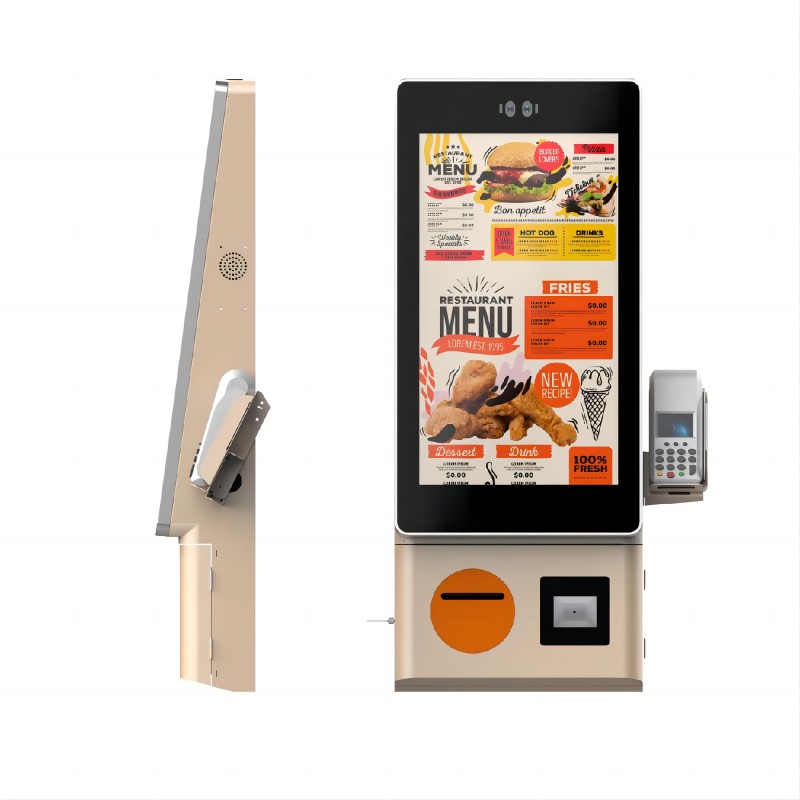
Step 1: Activate the Kiosk, Wake Up the Screen: Touch the screen or press a button to activate it.
Step 2: Select a Service, Main Menu: Choose the service you need from the main menu, such as “Buy Tickets,” “Order Food,” or “Check-In.”
Step 3: Enter Information, Input or Scan: Follow the on-screen instructions to enter information, using a virtual keyboard, barcode scanner, or card reader.
Step 4: Confirm Selections, Review Information: Check that your selections are correct. Edit if Needed: Go back and edit if any changes are required.
Step 5: Make Payment (if applicable), Choose Payment Method: Select credit/debit card, mobile payment, cash, or contactless payment. Complete Payment: Follow the on-screen instructions to finish the payment and confirm the transaction.
Step 6: Collect Receipt or Confirmation, Print Receipt: Collect your printed receipt or ticket from the designated slot. Digital Confirmation: Some kiosks may send a confirmation email or text.
Step 7: Follow Further Instructions, Complete Transaction: Follow any additional steps as instructed by the kiosk, then return to the main menu.
Step 8: Seek Assistance, Get Help: If you encounter any issues, use the help option on the screen or ask nearby staff for assistance.
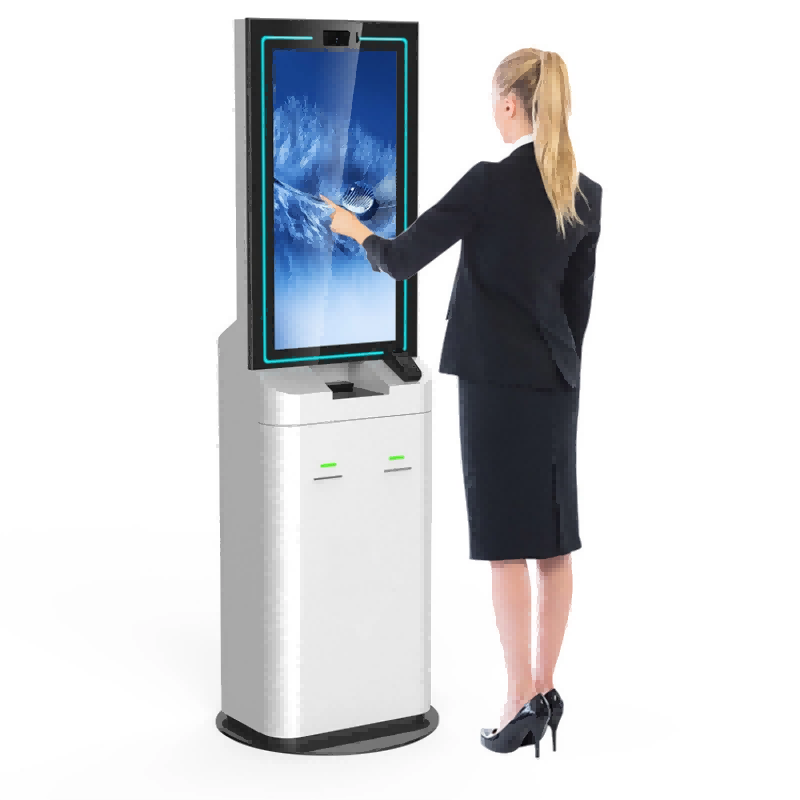
The primary purposes of self-service kiosks can be summarized as follows:
Enhancing Customer Experience: Self-service kiosks provide convenience and accessibility, allowing customers to quickly access information, services, or products without waiting in line or interacting with a staff member.
Improving Operational Efficiency: By automating routine transactions and service processes, kiosks reduce the workload on staff and streamline operations. This efficiency can lead to cost savings and improved service delivery.
Increasing Sales and Revenue: Kiosks can serve as additional points of sale, allowing businesses to reach customers in locations or times where traditional staffed service might not be feasible. This can lead to increased sales and upsell opportunities.
Standardizing Service Delivery: Self-service kiosks ensure consistency in service delivery and information presentation, minimizing errors and enhancing reliability.
Collecting Customer Data and Insights: Kiosks can gather valuable data on customer preferences, behaviors, and usage patterns. This data can be analyzed to improve marketing strategies, operational decisions, and customer service offerings.
Overall, self-service kiosks are designed to enhance customer satisfaction, optimize operational processes, and drive business growth through improved efficiency and service delivery.

Cost Savings: By automating transactions and reducing the need for human staff, self-service kiosks can significantly lower operational costs associated with labor.
Improved Efficiency: Kiosks streamline service delivery, reducing wait times and improving customer flow. This efficiency can lead to higher throughput and increased customer satisfaction.
Increased Revenue: Kiosks can facilitate upselling and cross-selling opportunities by presenting additional products or services during the transaction process.
Consistency in Service: Kiosks deliver standardized service experiences, ensuring that every customer interaction follows predefined processes and protocols.
Data Collection and Analytics: Kiosks gather valuable customer data such as transaction history, preferences, and demographics. This data can be analyzed to understand customer behavior and tailor marketing strategies accordingly.
24/7 Availability: Unlike traditional service desks, kiosks can operate round the clock, providing service and support outside regular business hours.
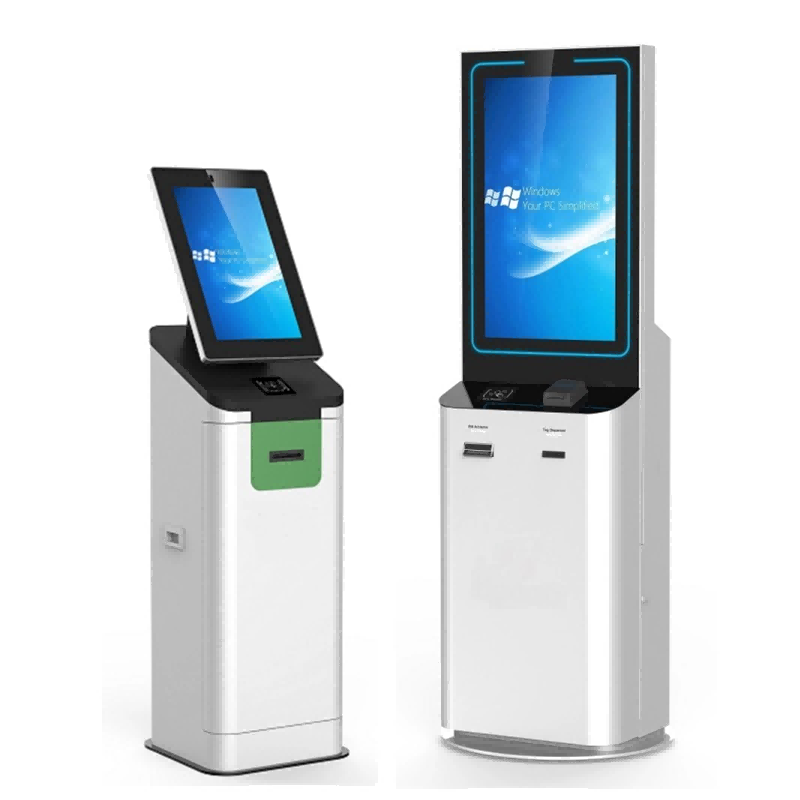
Business Goals: Aligning kiosk functionalities with specific business objectives such as improving customer experience, reducing operational costs, or increasing revenue.
Technical Requirements: Compatibility with existing IT infrastructure, security protocols, and scalability for future expansions.
Regulatory Compliance: Adherence to industry standards for data security (e.g., PCI-DSS for payment processing) and accessibility regulations.
Vendor Selection: Evaluating vendors based on reputation, support capabilities, warranty terms, and ongoing maintenance services.
User Experience: Conducting usability testing to ensure the kiosk design meets the needs of diverse customer demographics.
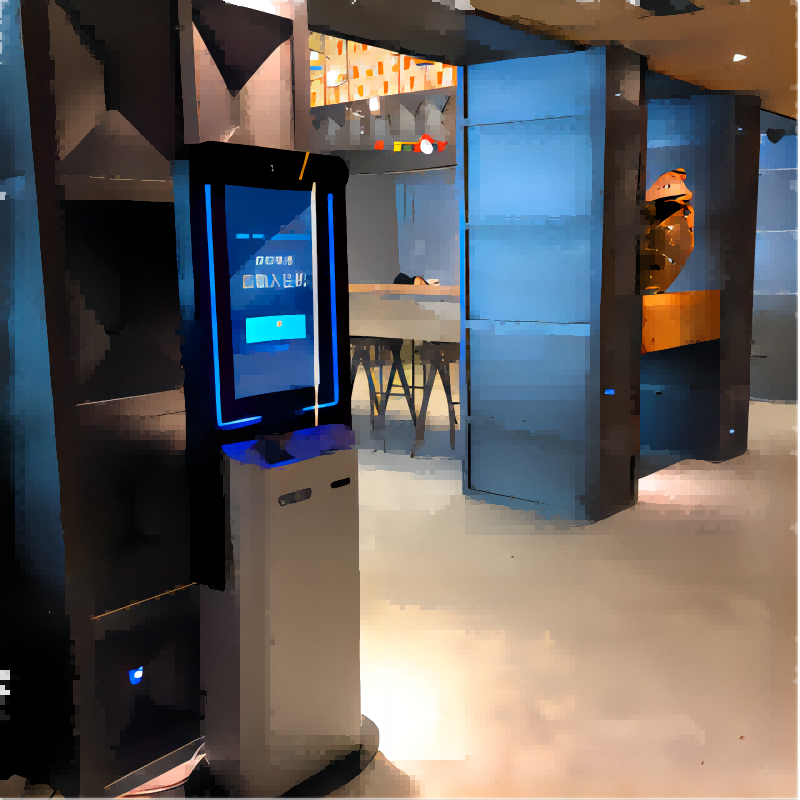
Self-service Kiosks are commonly found in various application scenarios and settings, such as:
1. Airports: For check-in, printing boarding passes, and managing flight details.
2. Retail stores: For checking prices, locating items, or completing purchases.
3. Restaurants: For placing orders and making payments.
4. Banks: For conducting financial transactions like depositing checks, withdrawing cash, and checking account balances.
5. Transportation: Ticketing for buses, trains, metro, subway, etc.
6. Healthcare: Bill payments, appointment check-ins, and prescription pickups.
7. Hospitality: Hotel check-in/check-out, event ticketing, and parking payments.
8. Utilities: Utility bill payments for electricity, water, and gas services.
9. Entertainment: Ticket purchases for movies, concerts, and amusement parks.
10. Used for hotel, parking lot, and supermarket checkout kiosk
11. Government offices: For accessing public services, filling forms, and making payments.
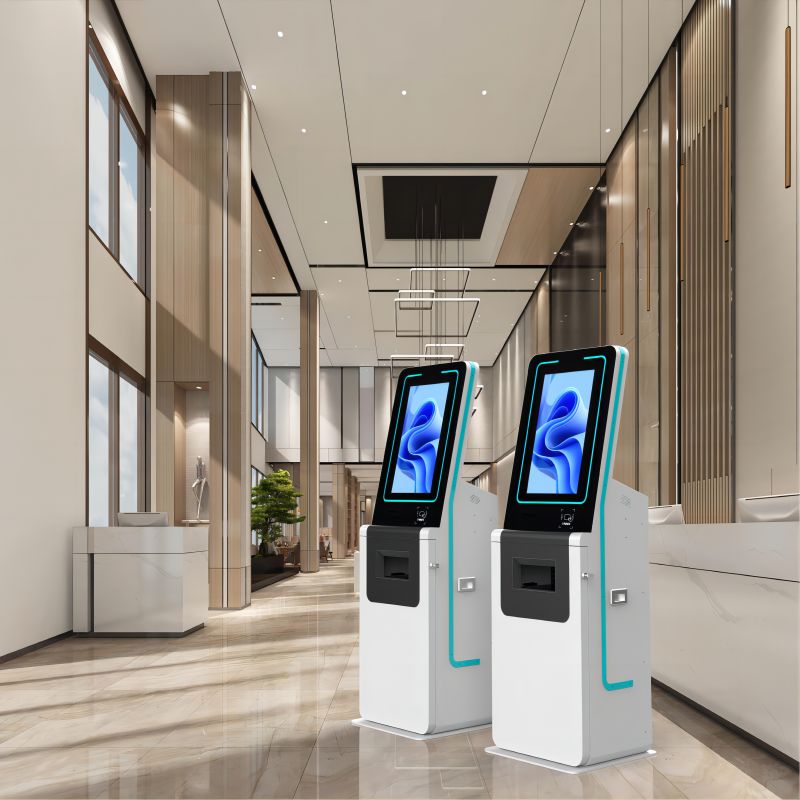
Enclosure: Durable and often weatherproof casing to protect the internal components. Made from materials like stainless steel or aluminum.
Touchscreen Display: High-resolution screens, often with anti-glare and high-brightness capabilities. Capacitive or resistive touch technology.
Processor: Typically includes Intel or ARM-based processors to ensure smooth operation and multitasking.
Memory and Storage: Adequate RAM (usually 4GB or more) and storage options (HDD or SSD) to handle software applications and data.
Connectivity: Options for Wi-Fi, Ethernet, and sometimes cellular connectivity to ensure reliable network access.
Power Supply: Robust power units, often with surge protection and sometimes with battery backup options.
Peripheral Devices:
Printers: Thermal or inkjet printers for receipts, tickets, or other printed materials.
Card Readers: Magnetic stripe readers, chip card readers, and contactless payment options (NFC/RFID).
Barcode Scanners: For scanning products, tickets, or user identification.
Cameras: For security, user interaction, or facial recognition.
Speakers and Microphones: For audio instructions, feedback, and communication.
Operating System: Typically Windows, Linux, or Android, providing a stable and secure platform for applications.
User Interface (UI) Software: Custom-designed interfaces that are intuitive and user-friendly, tailored to the kiosk’s specific application.
Content Management System (CMS): Allows remote management of the content displayed on the kiosk, including updates, scheduling, and monitoring.
Security Software: Ensures data encryption, user authentication, and protection against malware and cyber threats.
Application Software: Specific to the kiosk’s purpose, such as:
Payment Processing Software: For handling transactions securely and efficiently.
Navigation Software: For wayfinding and information display.
Customer Interaction Software: For feedback collection, surveys, and customer service.
Monitoring and Reporting Tools: Track the kiosk’s performance, usage statistics, and maintenance needs, often accessible remotely.
Internet Connectivity: Essential for real-time updates, data transfer, and remote management.
Networking Hardware: Routers, modems, and network switches to ensure stable and secure connections.
4. Additional Features
Cooling Systems: To manage internal temperature and ensure optimal performance in various environments.
Accessibility Features: Options like voice commands, screen readers, and adjustable heights to accommodate all users, including those with disabilities.
Branding and Customization: Customizable exterior designs, colors, and logos to match the branding of the business or organization.
By combining these components, self-service kiosks provide a versatile, efficient, and user-friendly solution for a wide range of applications, enhancing both user experience and operational efficiency.
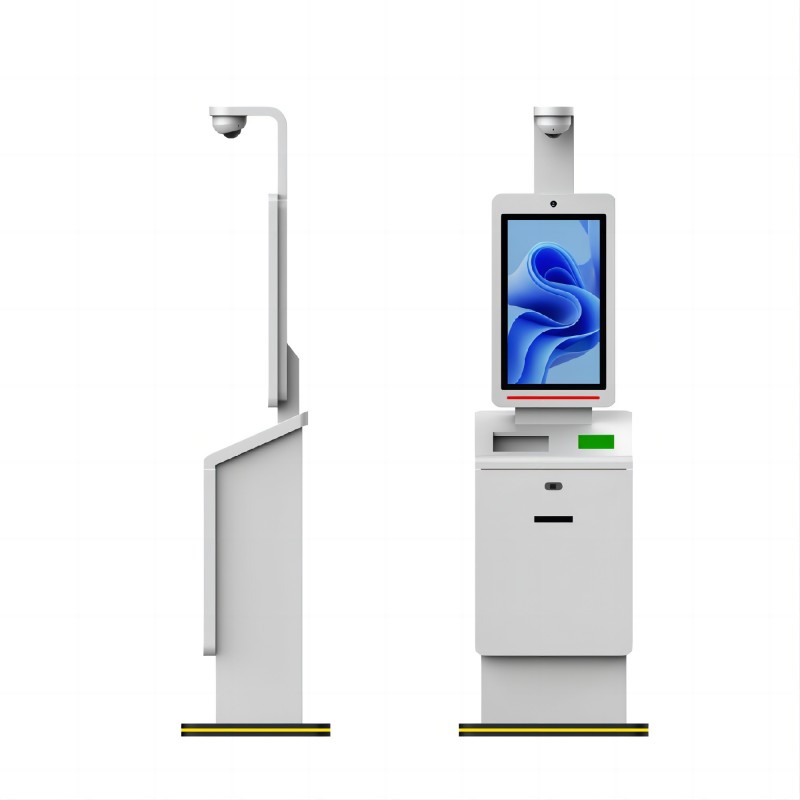
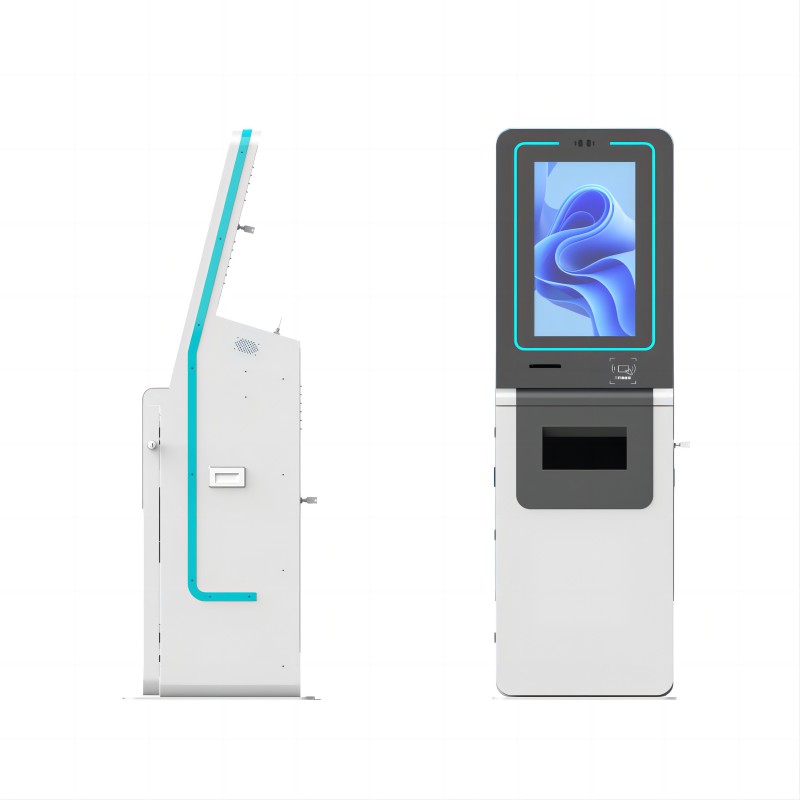
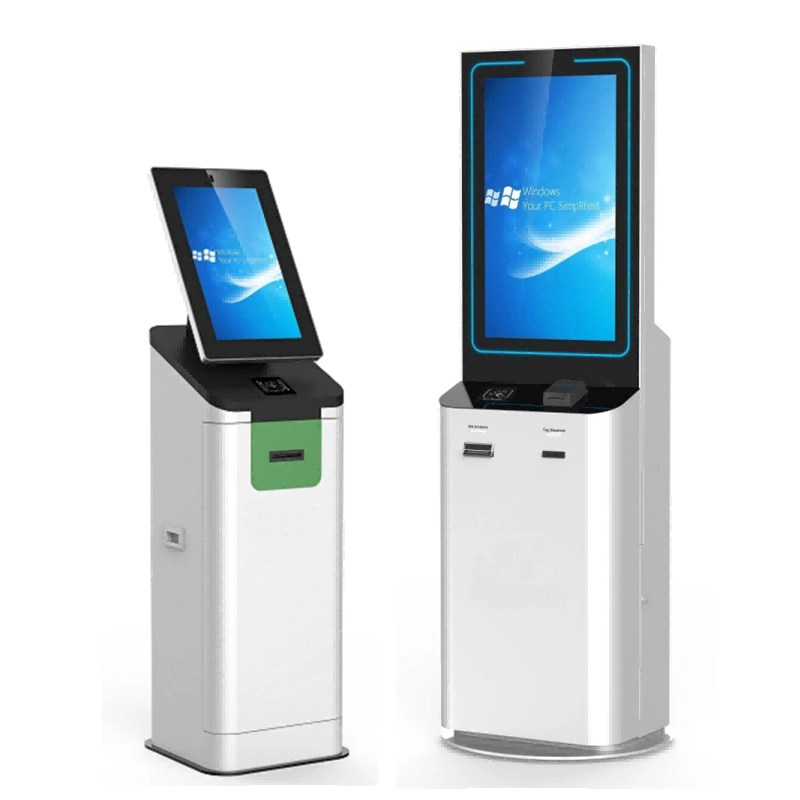
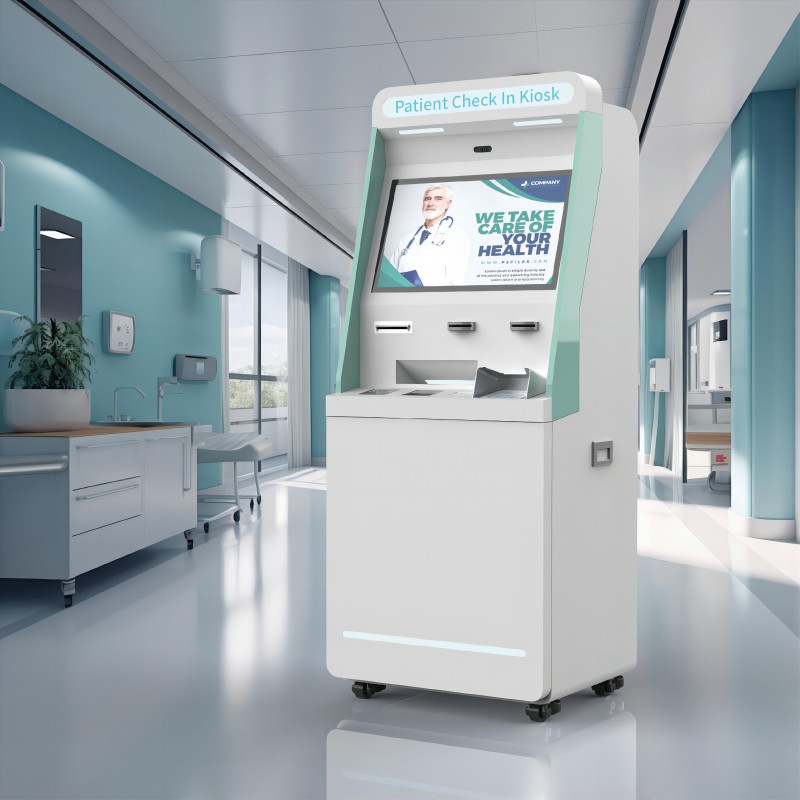
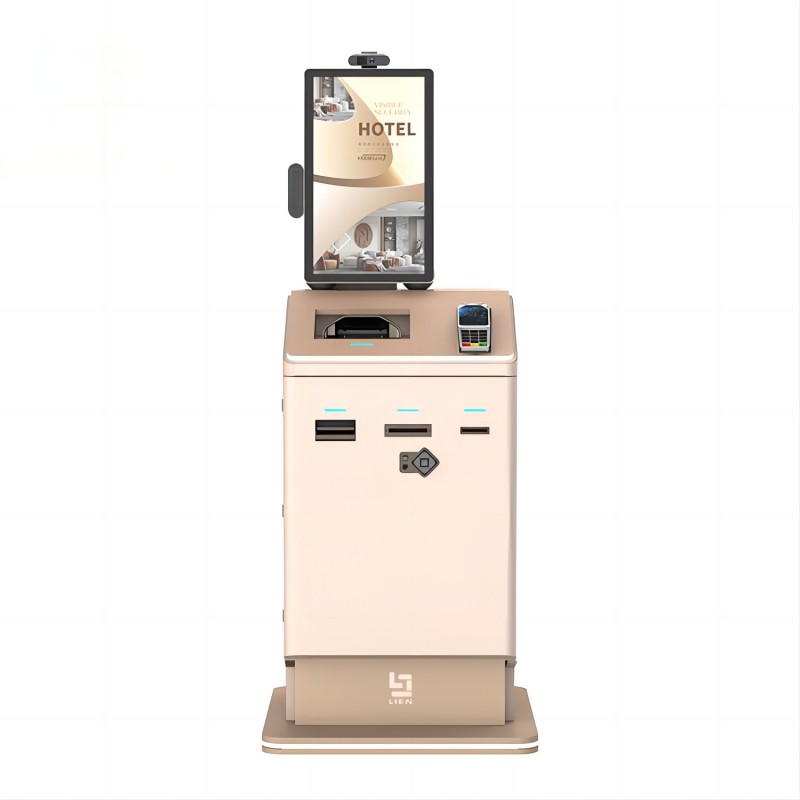
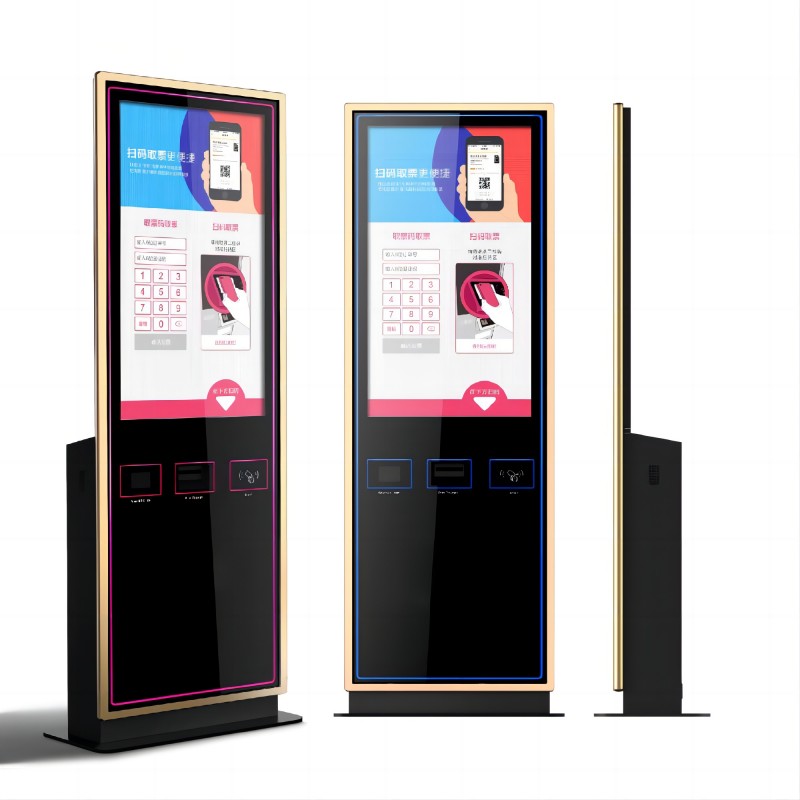
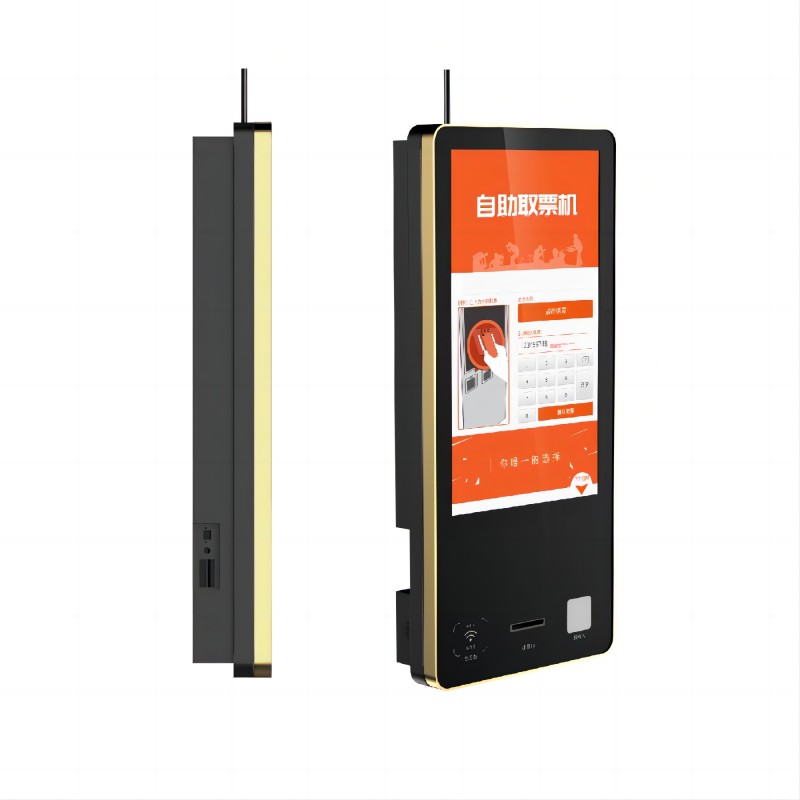
What did our happy clients say?
Intuitive Interface:
We are thrilled with our new self-services kiosk! The intuitive touchscreen interface is incredibly user-friendly, making it easy for our customers to navigate. This has significantly improved our service efficiency. Thank you!
Excellent Customer Support:
The customer support we received was outstanding. From installation to troubleshooting, the team was always available and helpful. Their service has made our experience seamless and stress-free. Highly recommend!
Robust Security:
The robust security features of these self-services kiosks are impressive. Our customers feel safe making transactions, and we have peace of mind knowing their data is protected. This is a huge competitive advantage for us. Thank you!
Reliable Performance:
The reliability of the self-services kiosk is unmatched. They perform flawlessly even under heavy usage, ensuring our operations run smoothly. This level of dependability is exactly what we needed. Thanks for such a reliable product!